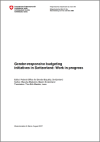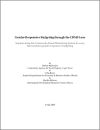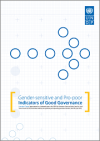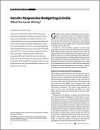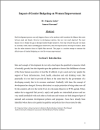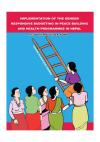FOUND 99
The first debates on gender-responsive budgeting initiatives emerged in Switzerland in 1994, The choice of methods for conducting gender-differentiated analyses and the means by which they are conducted have been informed, and continue to be informed, by the relatively early emergence of gender-resp
The paper suggests how the Community-Based Monitoring System (CBMS), developed and implemented in 14 countries over the last ten years with financial support from the Canadian International Development Research Centre (IDRC), can be used to facilitate gender-responsive budgeting (GRB) at the local l
This paper was prepared as a background to the UNDP Oslo Governance Centre and Indian Council for Social Science Research (ICSSR) International workshop on engendering and empowering governance indicators, New Delhi, April 2005.
This article from the World Bank Institute's Development Outreach Journal discusses the importance of citizen's efforts to audit directly the activities of development programs. The piece, which emphasizes that local accountability to the poor can be served in the form of gender-sensitive parti
Comics on the topic of GRB. For promoting better understanding of the GRB concept among civil society and wider public, including youth.
The article examines the two main strategies adopted by the Government of India for institutionalizing gender responsive budgeting to highlight what has gone wrong and what needs to be fixed in order to achieve better outcomes for women.
This publication supports the design and formulation of Gender Sensitive policies and budgets in the Health Sector.
This paper is an attempt to measure the effectiveness of Gender Budgeting as a tool for women empowerment. In recent years, Gender Budget Initiatives have emerged as an effective way to bridge gender gaps.
The GRBC has developed five criteria for evaluation of genderresponsiveness of the budgeted government programmes and projects.
The Global Programme Increasing Accountability in Financing for Gender Equality’ was developed to increase financing for national gender equality commitments in sixteen countries and to strengthen government and donor accountability on financing decisions and practices.
